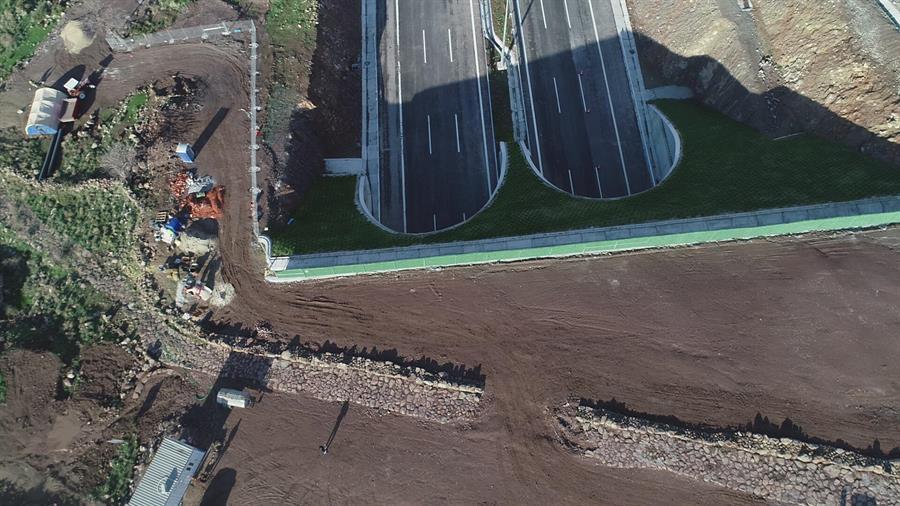
A historic road to the ancient city of Neonteikhos in the Aegean province of İzmir, which intersects with a motorway, was removed during the construction of an overpass bridge that was built for its protection, and now the removed stones have been reassembled as a puzzle.
A joint project was prepared by the Ministry of Culture and Tourism and the Directorate of Highways, because the motorway route was passing near the ancient city. With the approval of the project, it was decided to build an overpass bridge so that the 2,400-year-old road, currently used by the locals, would not be affected by the construction.
Before construction, the corner, edge and elevation differences of each of the stones on the road were relieved, aerial photographs of the ancient road were taken, and drafts were made.
Upon completion of the bridge construction, the restoration of the ancient road began, and the stones of the road leading to the ancient city of Neonteikhos were reassembled as a puzzle.
Thirty-five archaeologists and restorers, 450 workers and 35 experts took part in the rescue excavations, and 986 artifacts were found around the road during the construction.
The historical artifacts were sent to the laboratory of İzmir Museum Directorate for restoration and consolidation.
Some 450 graves were also found during the project.
“Before the road was built, we knew that there was an ancient city in the region, but we did not anticipate that such a qualified city structure and such a qualified road would emerge,” said İzmir Museum Director Hünkar Keser.
“During the excavations, a great number of artifacts emerged from the sixth century B.C. to the sixth century A.D. We are planning to exhibit about 450 of these graves in 2021,” he said.
“After the work is finished, we will reopen and introduce them to people,” Keser added.
In the Hellenic language, “Neonteikhos” means “New Castle.”
The people who lived here were faced with the resistance from the Pelasgians, ancestors of the Greeks, after Aeolian Helenians started migrating to Anatolian coasts a few centuries after the Trojan War.
As a result, they formed a new city called Neonteikhos six kilometers away from Larissa and thus set the foundation of ancient Cyme.